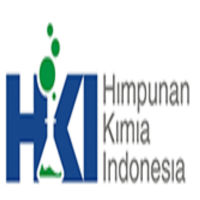STUDI KOMPARASI ADSORPSI TIGA JENIS ZAT WARNA REMAZOL PADA PERMUKAAN KARBON AKTIF
Abstract
Remazol is a reactive dye that is widely used in the textile industry with functional groups that can be well covalently bonded to textile fibres, but difficult to decompose, carcinogenic, and harmful to the health and ecosystems. This study specifically aims to analyse the adsorption power of activated carbon on three types of Remazol dyes using batch experiment method as an effective way to reduce the concentration of these dyes in textile industry wastewater. Using activated carbon with the same treatment, Remazol Red dye had the best interaction and was adsorbed in the highest amount on the activated carbon surface (125.16 mg/g), followed by Remazol Blue (16.23 mg/g) and finally Remazol Black dye (11.07 mg/g). The three adsorption processes that occur are in accordance with the Langmuir adsorption isotherm model, with color removal percentage of 74.4 % (Remazol Red), 49.5 % (Remazol Blue), and 48.1 % (Remazol Black). These results are in accordance with the structural studies conducted on the three types of Remazol synthetic dyes, in which Remazol Black with the bulkiest structure has the weakest physical interaction with carbon atoms on the activated carbon surface thus absorbed in the least amount on the adsorbent surface.
Keywords
Full Text:
PDFReferences
Ahmad, Mohd Azmier, and Nazira Khabibor Rahman. 2011. “Equilibrium, Kinetics and Thermodynamic of Remazol Brilliant Orange 3R Dye Adsorption on Coffee Husk-Based Activated Carbon.” Chemical Engineering Journal 170 (1): 154–61. https://doi.org/10.1016/j.cej.2011.03.045.
Bispo, Mozart Daltro, Jaderson Kleveston Schneider, Diego Da Silva Oliveira, Debora Tomasini, Gabriela Pereira Da Silva MacIel, Tiago Schena, Bruna Onorevoli, et al. 2018. “Production of Activated Biochar from Coconut Fiber for the Removal of Organic Compounds from Phenolic.” Journal of Environmental Chemical Engineering 6 (2): 2743–50. https://doi.org/10.1016/j.jece.2018.04.029.
Cardoso, Natali F., Rodrigo B. Pinto, Eder C. Lima, Tatiana Calvete, Camila V. Amavisca, Betina Royer, Marta L. Cunha, Thais H.M. Fernandes, and Isis S. Pinto. 2011. “Removal of Remazol Black B Textile Dye from Aqueous Solution by Adsorption.” Desalination 269 (1–3): 92–103. https://doi.org/10.1016/j.desal.2010.10.047.
Estlander, Tuula. 1988. “Allergic Dermatoses and Respiratory Diseases from Reactive Dyes.” Contact Dermatitis. https://doi.org/10.1111/j.1600-0536.1988.tb02836.x.
Gokulan, R., A. Avinash, G. Ganesh Prabhu, and J. Jegan. 2019. “Remediation of Remazol Dyes by Biochar Derived from Caulerpa Scalpelliformis - An Eco-Friendly Approach.” Journal of Environmental Chemical Engineering 7 (5): 103297. https://doi.org/10.1016/j.jece.2019.103297.
Gokulan, R., G. Ganesh Prabhu, and J. Jegan. 2019. “A Novel Sorbent Ulva Lactuca-Derived Biochar for Remediation of Remazol Brilliant Orange 3R in Packed Column.” Water Environment Research 91 (7): 642–49. https://doi.org/10.1002/wer.1092.
Gokulan, Ravindiran, Ganapathy Ganesh Prabhu, and Josephraj Jegan. 2019. “Remediation of Complex Remazol Effluent Using Biochar Derived from Green Seaweed Biomass.” International Journal of Phytoremediation 21 (12): 1179–89. https://doi.org/10.1080/15226514.2019.1612845.
Javaid Mughal, M., Rehana Saeed, M. Naeem, M. Aleem Ahmed, Arfa Yasmien, Qasim Siddiqui, and Mansoor Iqbal. 2013. “Dye Fixation and Decolourization of Vinyl Sulphone Reactive Dyes by Using Dicyanidiamide Fixer in the Presence of Ferric Chloride.” Journal of Saudi Chemical Society 17 (1): 23–28. https://doi.org/10.1016/j.jscs.2011.02.017.
Mishra, Saurabh, Liu Cheng, and Abhijit Maiti. 2021. “The Utilization of Agro-Biomass/Byproducts for Effective Bio-Removal of Dyes from Dyeing Wastewater: A Comprehensive Review.” Journal of Environmental Chemical Engineering 9 (1): 104901. https://doi.org/10.1016/j.jece.2020.104901.
Pelosi, B. T., L. K.S. Lima, and M. G.A. Vieira. 2014. “Removal of the Synthetic Dye Remazol Brilliant Blue r from Textile Industry Wastewaters by Biosorption on the Macrophyte Salvinia Natans.” Brazilian Journal of Chemical Engineering 31 (4): 1035–45. https://doi.org/10.1590/0104-6632.20140314s00002568.
Rainert, Karine Thaise, Hayssa Carolini Alamar Nunes, Marcel Jefferson Gonçalves, Cristiane Vieira Helm, and Lorena Benathar Ballod Tavares. 2021. “Decolorization of the Synthetic Dye Remazol Brilliant Blue Reactive (RBBR) by Ganoderma Lucidum on Bio-Adsorbent of the Solid Bleached Sulfate Paperboard Coated with Polyethylene Terephthalate.” Journal of Environmental Chemical Engineering 9 (2): 104990. https://doi.org/10.1016/j.jece.2020.104990.
Raj, Abhay, Ashutosh Yadav, Abhay Prakash Rawat, Anil Kumar Singh, Sunil Kumar, Ashutosh Kumar Pandey, Ranjna Sirohi, and Ashok Pandey. 2021. “Kinetic and Thermodynamic Investigations of Sewage Sludge Biochar in Removal of Remazol Brilliant Blue R Dye from Aqueous Solution and Evaluation of Residual Dyes Cytotoxicity.” Environmental Technology and Innovation 23: 101556. https://doi.org/10.1016/j.eti.2021.101556.
Rovira, Joaquim, and José L. Domingo. 2019. “Human Health Risks Due to Exposure to Inorganic and Organic Chemicals from Textiles: A Review.” Environmental Research 168: 62–69. https://doi.org/10.1016/j.envres.2018.09.027.
Tan, Xiaofei, Yunguo Liu, Guangming Zeng, Xin Wang, Xinjiang Hu, Yanling Gu, and Zhongzhu Yang. 2015. “Application of Biochar for the Removal of Pollutants from Aqueous Solutions.” Chemosphere 125: 70–85. https://doi.org/10.1016/j.chemosphere.2014.12.058.
DOI: http://dx.doi.org/10.22373/lj.v10i1.13878
Refbacks
- There are currently no refbacks.
Copyright (c) 2022 Ni Luh Putu Ananda Saraswati, I Made Oka Riawan, Astrid Alvania Rihi

This work is licensed under a Creative Commons Attribution 4.0 International License.
INDEXED IN


